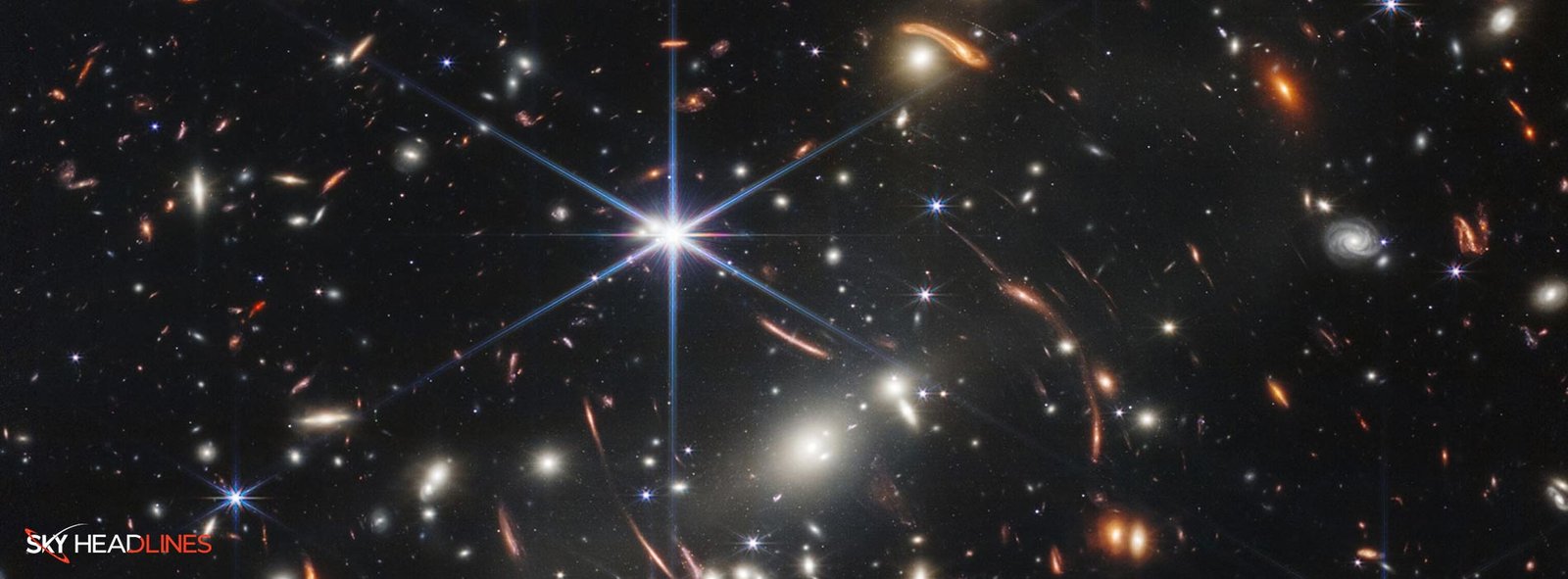News:
The gas between stars and galaxies was non-transparent in the early universe, and intense starlight could not penetrate it.
However, 1 billion years after the great bang, the gas was entirely transparent.
But what could be the possible reason for the gas being non-opaque?
Why Were the Galaxies in the Early Universe Not Transparent?
The explanation is that the stars in the galaxies emitted enough light to heat and ionize the gas around them, enhancing our collective understanding over hundreds of millions of years, according to new data from NASA’s James Webb Space Telescope.
The Understanding of Early Universe Cosmology:
The findings, from a research team led by Simon Lilly of ETH ZüriEach in Switzerland, are the most recent insights into the Era of Reionization, an era when the universe underwent profound changes. The universe’s gas was extremely hot and dense after the big bang.
The gas-cooled over hundreds of millions of years. The universe then pressed “repeat.” The gas grew hot and ionized again, most likely because of the birth of early stars in galaxies, and became transparent over millions of years.
How Big These Galaxies Are?
Researchers have been looking for definitive evidence to explain these shifts for a long time. The latest findings effectively lift the lid on the end of this reionization era.
Daichi Kashino, lead author of the team’s first publication from Nagoya University in Japan.
“Not only does Webb clearly show that these transparent regions are found around galaxies in the early universe, but we’ve also measured how large they are,”
He also added, emphasized, and praised the findings of the James Webb Telescope.
“We’re seeing galaxies reionize the gas around them using Webb’s data.”
In comparison to galaxies, these patches of clear gas are enormous. Just imagine a hot air balloon with a pea dangling inside.
Early Universe Timeline by Webb’s Observations
Webb’s observations suggest that these small galaxies played a role in reionization by clearing large areas of space surrounding them. These translucent “bubbles” grew larger and larger over the next hundred million years, finally combining and causing the entire cosmos to become transparent.

Stars and Their Composition
The quasar’s light was either absorbed by opaque gas or traveled freely through transparent gas as it proceeded toward us through successive regions of gas.
Webb’s data was combined with views of the center quasar from the W. M.
The Magellan Telescope at Las Campanas Observatory in Chile, the Keck Observatory in Hawaii, the European Southern Observatory’s Very Large Telescope, and others.
This was noted by Anna-Christina Eilers, lead author of another team publication.
“By illuminating gas along our line of sight, the quasar gives us extensive information about the composition and state of the gas,”
James Webb Telescope to Locate Transparent Galaxies
The researchers next used Webb to locate galaxies near this line of sight, revealing that the galaxies are generally surrounded by transparent zones with a radius of 2 million light-years.
In other words, toward the conclusion of the Reionization Era, Webb watched galaxies cleaning the space around them.
To put this in context, the area cleared by these galaxies is roughly the same as the distance between our Milky Way galaxy and its nearest neighbor, Andromeda.
What Caused Reionization of Galaxies in the Early Universe?
Researchers didn’t have this definitive evidence of what caused reionization until now -before Webb, they weren’t sure exactly what was to blame.
Now, here arises a question. How do these galaxies appear?
“They are more chaotic than those in the nearby universe,”
Jorryt Matthee, another ETH Zürich researcher and main author of the team’s second article, noted.
“Webb demonstrates that they were actively forming stars and must have emitted many supernovae. They had an exciting childhood!”
Eilers utilized Webb’s data along the way to determine that the black hole in the quasar at the heart of this field is the most massive known in the early universe, weighing 10 billion times the mass of the Sun.
“We still don’t know how quasars grew so large so early in the history of the universe,”
She also explained,
“That’s yet another puzzle to solve!”
Webb’s excellent photos also revealed no evidence that the quasar’s light had been gravitationally lensed, guaranteeing that the mass estimations are accurate.

Further Studies on Galaxies in Other Fields
The researchers will shortly begin a study on galaxies in five other fields, each of which will be anchored by a core quasar.
Webb’s findings from the first field were so evident that they couldn’t wait to discuss them.
“We expected to find a few dozen galaxies that existed during the Reionization Era, but we easily found 117,”
Kashino revealed.
“Webb has exceeded all of our expectations.”
Early Universe Picture From Near Infrared Camera
Lilly’s research team, the Emission-line galaxies and Intergalactic Gas in the Epoch of Reionization (EIGER) have demonstrated the unique power of combining conventional images from Webb’s NIRCam (Near-Infrared Camera) With data from the same instrument’s wide-field slitless spectroscopy mode gives a spectrum of every object in the images – turning Webb into what the team calls a “spectacular spectroscopic redshift machine.”
Team’s First Publications:
The team’s first publications include “EIGER I. a large sample of [O iii]-emitting galaxies at 5.3 z 6.9 and direct evidence for local reionization by galaxies,” led by Kashino,
“EIGER II. first, spectroscopic characterization of the young stars and ionized gas associated with strong H and [OIII] line-emission in galaxies at z = 5





